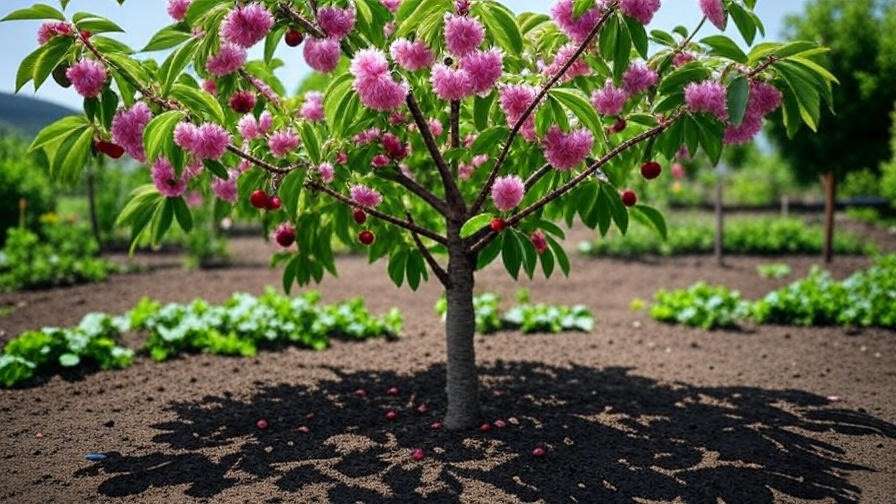Imagine your garden bursting with the vibrant pink blossoms of a Chilean cherry tree, its branches heavy with tart, juicy cherries ready for picking. This stunning tree isn’t just a feast for the eyes—it’s a rewarding addition for any gardener dreaming of beauty and bounty. Whether you’re a beginner or a seasoned grower, mastering Chilean cherry tree care can transform your outdoor space. In this comprehensive guide, we’ll walk you through every step to ensure your Chilean cherry tree thrives, from planting to harvesting. Backed by horticultural expertise and practical experience, this article delivers actionable advice to solve common challenges like poor fruit yield or pest issues, ensuring your tree flourishes for years to come. 🌿
1. Understanding the Chilean Cherry Tree 🌳
1.1 What Is a Chilean Cherry Tree?
The Chilean cherry tree, scientifically known as Prunus cerasus, is a deciduous fruit tree celebrated for its ornamental beauty and tart cherries. Native to regions of Chile, this tree thrives in temperate climates, producing stunning spring blossoms and edible fruit. Typically growing 15-25 feet tall, it’s a manageable size for most home gardens. Its glossy green leaves and clusters of white-to-pink flowers make it a focal point, while its cherries are perfect for pies, jams, or fresh eating. Unlike sweet cherries (Prunus avium), Chilean cherries are tart, offering a unique flavor profile for culinary enthusiasts.
1.2 Benefits of Growing a Chilean Cherry Tree
Why choose a Chilean cherry tree? Beyond its aesthetic appeal, it offers multiple benefits:
- Ornamental Value: The tree’s vibrant blooms and lush foliage enhance any landscape, creating a picturesque spring display. 🌸
- Edible Fruit: Tart cherries are rich in antioxidants, ideal for healthy recipes like smoothies or preserves.
- Environmental Impact: The tree attracts pollinators like bees, supporting local ecosystems and boosting garden biodiversity. 🐝
- Versatility: Its compact size suits urban gardens, orchards, or even large containers.
1.3 Ideal Growing Zones and Conditions
Chilean cherry trees thrive in USDA Hardiness Zones 5-8, preferring temperate climates with distinct seasons. They need well-drained, loamy soil with a pH of 6.0-7.0 and at least 6 hours of direct sunlight daily. While adaptable, they perform best in areas with moderate summers and cold winters, which trigger fruit production. Avoid planting in heavy clay soils or low-lying areas prone to frost pockets, as these can harm root health and flowering.
2. Planting Your Chilean Cherry Tree 🌱
2.1 Choosing the Right Location
Selecting the perfect spot is critical for your Chilean cherry tree’s success. Aim for a location with:
- Full Sun: At least 6-8 hours of direct sunlight to promote flowering and fruiting.
- Adequate Space: Allow 15-20 feet of clearance to accommodate the tree’s mature size and ensure good air circulation.
- Protection: Avoid windy or shaded areas, as strong winds can damage branches, and shade reduces fruit yield.
Common Mistake: Planting too close to buildings or other trees can stunt growth and invite pests. Choose an open, sunny spot for optimal results.
2.2 Selecting a Healthy Tree
When purchasing a Chilean cherry tree, quality matters. Opt for:
- Nursery Stock: Choose trees with strong, well-developed roots and no signs of disease (e.g., wilting leaves or cankers).
- Bare-Root vs. Container-Grown: Bare-root trees are cost-effective and establish well if planted in early spring, while container-grown trees offer flexibility for planting year-round.
- Recommended Cultivars: Popular varieties like Montmorency or Balaton are known for their reliable fruit production and disease resistance.
Pro Tip: Inspect the root system for firmness and avoid trees with circling roots, which can hinder establishment.
2.3 Step-by-Step Planting Guide
Follow these steps to plant your Chilean cherry tree:
- Timing: Plant in early spring or fall when the tree is dormant, allowing roots to establish before extreme weather.
- Soil Preparation: Test soil pH (aim for 6.0-7.0) and amend with organic matter like compost or aged manure to improve drainage and fertility.
- Digging the Hole: Make it twice as wide and as deep as the root ball to encourage root spread.
- Planting: Place the tree in the hole, ensuring the graft union (if present) is 2-3 inches above soil level. Backfill with soil, tamping gently to remove air pockets.
- Watering: Water thoroughly after planting to settle the soil.
- Mulching: Apply a 2-4 inch layer of organic mulch (e.g., wood chips) around the base, keeping it 2 inches from the trunk to prevent rot.
- Staking: Use a stake for young trees in windy areas to ensure stability.
Expert Tip: Add a handful of bone meal to the planting hole to boost root development. 🌱

3. Essential Care for a Thriving Chilean Cherry Tree 🌿
3.1 Watering Requirements
Proper watering is key to a healthy Chilean cherry tree:
- Young Trees: Water deeply (1-2 inches per week) to encourage root growth, especially during the first year.
- Mature Trees: Reduce frequency but ensure deep watering during dry spells, particularly in summer.
- Signs of Trouble: Yellowing leaves may indicate overwatering, while wilting suggests underwatering.
- Irrigation Tip: Use a drip system or soaker hose to deliver water directly to the root zone, minimizing waste. 💧
3.2 Fertilizing for Optimal Growth
Fertilizing supports vigorous growth and fruit production:
- When to Fertilize: Apply a balanced fertilizer (e.g., 10-10-10) in early spring before bud break.
- Organic Options: Compost, well-rotted manure, or fish emulsion provide slow-release nutrients.
- Application: Spread fertilizer evenly around the drip line (the area under the outer edge of the canopy), avoiding direct contact with the trunk.
- Warning: Over-fertilizing can cause excessive leaf growth at the expense of fruit. Follow package instructions carefully.
3.3 Pruning for Health and Productivity
Pruning enhances tree health and maximizes fruit yield:
- Why Prune: Removes dead or diseased wood, improves air circulation, and shapes the tree for better light penetration.
- When to Prune: Late winter or early spring, before buds swell, to minimize stress.
- Techniques:
- Remove suckers and water sprouts (vertical shoots).
- Thin crowded branches to allow light and air to reach the center.
- Cut back dead or damaged wood to healthy tissue.
- Tools: Use clean, sharp pruning shears or loppers to prevent disease spread.
Pro Insight: Disinfect tools with a 10% bleach solution between cuts to avoid transmitting pathogens. ✂️
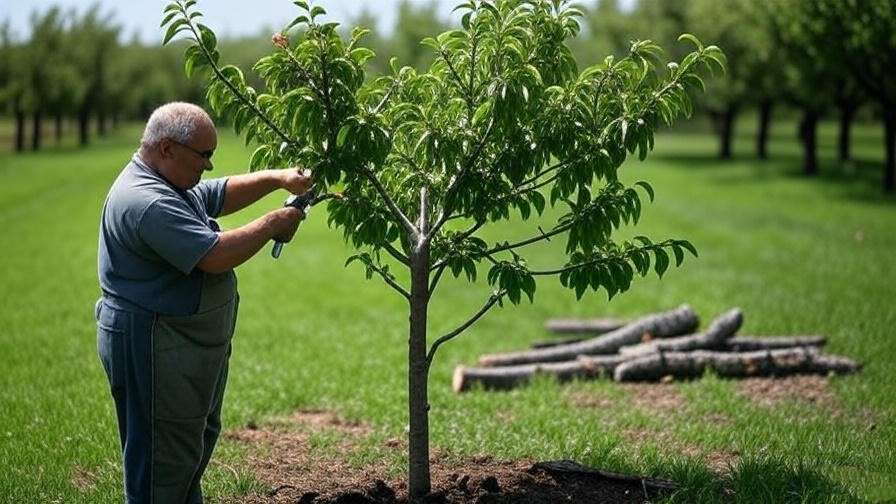
3.4 Mulching and Soil Care
Mulching is a game-changer for Chilean cherry trees:
- Benefits: Retains moisture, regulates soil temperature, and suppresses weeds.
- Best Mulch Types: Organic materials like wood chips, bark, or straw work well.
- How to Apply: Spread a 2-4 inch layer around the tree’s base, keeping it away from the trunk to prevent rot.
- Maintenance: Replenish mulch annually to maintain its effectiveness.
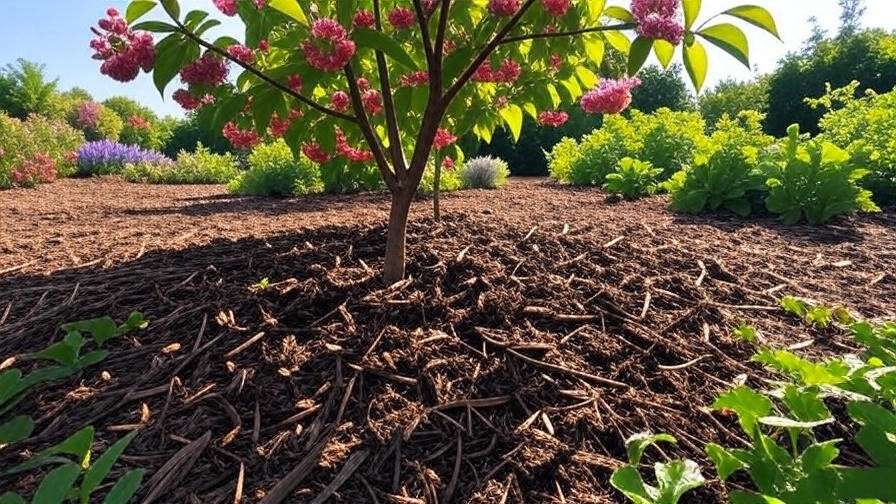
4. Protecting Your Chilean Cherry Tree from Pests and Diseases 🐛
4.1 Common Pests
Chilean cherry trees can attract pests like:
- Aphids: Small sap-sucking insects that cause leaf curling.
- Cherry Fruit Flies: Lay eggs in fruit, leading to maggot infestation.
- Spider Mites: Cause stippling on leaves, reducing photosynthesis.
- Control Methods:
- Organic: Use neem oil, insecticidal soap, or introduce beneficial insects like ladybugs.
- Chemical: Apply targeted pesticides only as a last resort, following local guidelines.
- Prevention: Regular monitoring and maintaining tree vigor reduce pest susceptibility.
4.2 Common Diseases
Key diseases to watch for include:
- Brown Rot: Fungal infection causing fruit rot and blossom blight.
- Leaf Spot: Dark spots on leaves, leading to defoliation.
- Powdery Mildew: White coating on leaves, reducing vigor.
- Management:
- Remove and destroy affected plant parts.
- Apply fungicides (e.g., sulfur-based) as needed.
- Improve air circulation through pruning.
- Case Study: A Chilean orchard successfully controlled brown rot by combining timely fungicide applications with rigorous sanitation practices, achieving a 90% reduction in disease incidence.
4.3 Winter Protection
Protect your tree during harsh winters:
- Trunk Wrapping: Use tree wraps to shield young trees from sunscald and rodents.
- Mulching Roots: Apply a thick layer of mulch to insulate roots against freezing temperatures.
- Frost Protection: Cover with frost blankets during early spring cold snaps to protect buds.
- Variety Selection: Choose cold-hardy cultivars like Balaton for regions with severe winters.
5. Maximizing Flowering and Fruit Production 🌸🍒
5.1 Pollination Basics
Most Chilean cherry trees are self-pollinating, but cross-pollination can boost yields:
- Self-Pollinating Varieties: Montmorency and Balaton produce fruit without a second tree.
- Cross-Pollination: Planting another variety nearby (e.g., Stella) enhances fruit set.
- Pollinators: Attract bees with companion plants like lavender or marigolds. 🐝
- Small Gardens: Opt for self-fertile cultivars to save space.
5.2 Encouraging Healthy Blooms
To ensure vibrant blooms:
- Sunlight: Ensure the tree receives full sun to maximize flower production.
- Pruning: Avoid heavy pruning during flowering to prevent bud loss.
- Nutrition: Apply a phosphorus-rich fertilizer to support blooming.
- Common Issue: Blossom drop may result from water stress or nutrient deficiencies. Address with consistent care.
Expert Tip: Plant bee-friendly flowers nearby to boost pollination success. 🌼
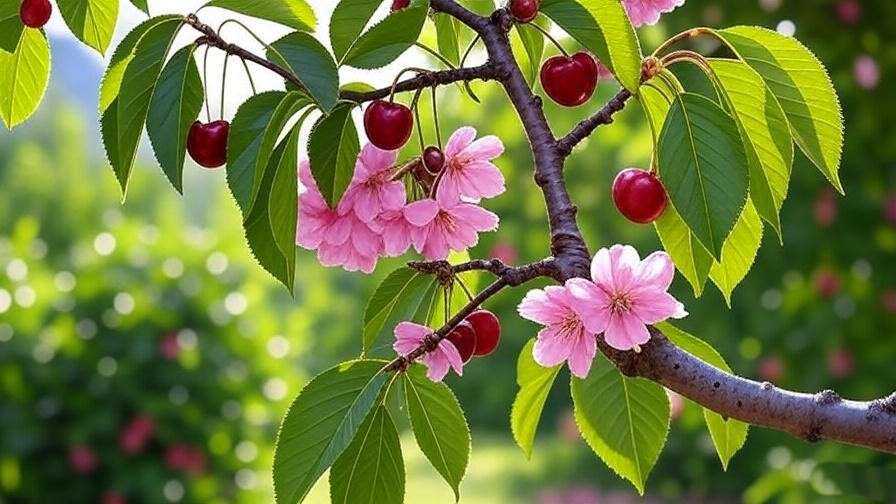
5.3 Harvesting Cherries
Harvest cherries at their peak for the best flavor:
- Timing: Pick in mid-summer when cherries are fully colored and slightly soft.
- Technique: Gently twist cherries off the stem to avoid damaging branches.
- Storage: Store in a cool, dry place or refrigerate for up to two weeks. Freeze or process into jams for longer storage.
Pro Tip: Taste-test a few cherries to confirm ripeness before harvesting the entire crop. 🍒
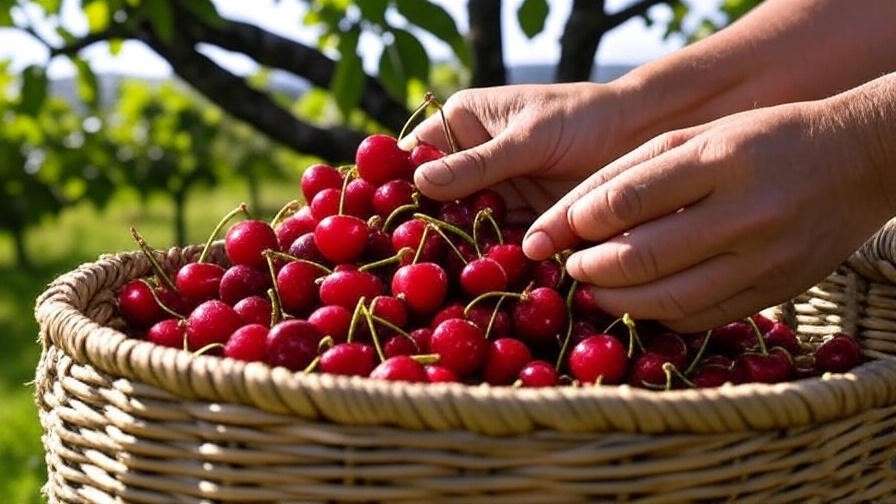
6. Troubleshooting Common Chilean Cherry Tree Problems 🛠️
6.1 Why Isn’t My Tree Fruiting?
A Chilean cherry tree that fails to produce fruit can be frustrating, but several factors could be at play:
- Poor Pollination: Even self-pollinating varieties benefit from pollinators. Ensure bees have access to the tree or consider planting a compatible cultivar nearby for cross-pollination.
- Nutrient Deficiencies: Lack of key nutrients like phosphorus or potassium can reduce fruit set. Conduct a soil test to identify deficiencies and apply a balanced fertilizer accordingly.
- Improper Pruning: Over-pruning or pruning at the wrong time (e.g., during flowering) can remove fruit-bearing wood. Stick to late winter pruning for best results.
- Solutions: Enhance pollination by planting bee-attracting flowers, test and amend soil, and follow proper pruning schedules.
Action Plan: If your tree is young (1-3 years), it may simply need time to mature. Most Chilean cherry trees begin fruiting reliably after 3-5 years.
6.2 Dealing with Stunted Growth
Stunted growth signals underlying issues that need addressing:
- Poor Soil Quality: Compacted or nutrient-poor soil restricts root development. Loosen soil and incorporate organic matter like compost to improve structure.
- Inadequate Watering: Inconsistent moisture can limit growth. Ensure deep, regular watering, especially during dry periods.
- Root Issues: Root rot or girdling roots can choke the tree. Inspect roots during planting and avoid overwatering to prevent rot.
- Solutions: Aerate soil, maintain a consistent watering schedule, and check for root circling in container-grown trees.
Expert Tip: If growth remains slow, consider a professional soil analysis from a local agricultural extension to pinpoint specific issues. 🌱
6.3 Addressing Yellowing Leaves
Yellowing leaves are a common symptom with multiple potential causes:
- Nutrient Deficiencies: Nitrogen or iron deficiencies often cause yellowing. Apply a balanced fertilizer or chelated iron for quick correction.
- Overwatering: Soggy soil suffocates roots, leading to yellow leaves. Improve drainage by amending soil or reducing irrigation.
- Pests: Aphids or spider mites can stress the tree, causing discoloration. Inspect leaves for pests and treat with insecticidal soap if needed.
- Diagnostic Steps: Check soil moisture, test nutrient levels, and examine leaves for pest activity. Address the root cause promptly to restore tree health.
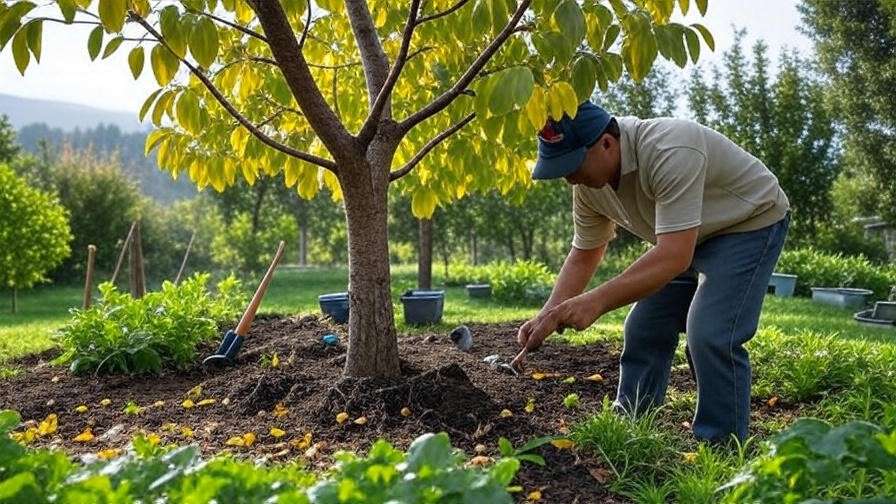
7. Sustainable and Eco-Friendly Practices for Chilean Cherry Tree Care 🌍
7.1 Organic Gardening Techniques
Growing a Chilean cherry tree sustainably benefits both your garden and the environment:
- Organic Pest Control: Use neem oil, diatomaceous earth, or beneficial insects like ladybugs to manage pests without harmful chemicals.
- Natural Fertilizers: Apply compost, worm castings, or fish emulsion to provide nutrients without synthetic additives.
- Benefits: Organic methods promote healthier soil, safer fruit for consumption, and a reduced environmental footprint.
Pro Insight: Rotate organic pest control methods to prevent pests from developing resistance, ensuring long-term effectiveness.
7.2 Water Conservation
Conserving water is critical, especially in drought-prone regions:
- Rain Barrels: Collect rainwater to irrigate your tree, reducing reliance on municipal water.
- Xeriscaping: Plant drought-tolerant ground covers around the tree to minimize water loss and suppress weeds.
- Smart Irrigation: Install a drip irrigation system with a timer to deliver water efficiently to the root zone. 💧
- Tip: Water early in the morning to reduce evaporation and ensure maximum absorption.
7.3 Supporting Local Ecosystems
Your Chilean cherry tree can enhance local biodiversity:
- Pollinator-Friendly Planting: Surround the tree with native flowers like clover or bee balm to attract pollinators, boosting fruit production.
- Avoid Harmful Chemicals: Skip synthetic pesticides and herbicides that harm beneficial insects and soil microbes.
- Wildlife Support: Allow fallen fruit to provide food for birds and small mammals, creating a balanced ecosystem.
Case Study: A community garden in Chile increased cherry yields by 20% by planting pollinator-friendly flowers and reducing chemical use, demonstrating the power of eco-friendly practices.
8. FAQs About Chilean Cherry Tree Care ❓
Q1: How long does it take for a Chilean cherry tree to bear fruit?
A: Most Chilean cherry trees begin producing fruit 3-5 years after planting, with full production by 7-10 years. Proper care, including pollination and nutrition, speeds up this timeline.
Q2: Can I grow a Chilean cherry tree in a container?
A: Yes, dwarf varieties like Montmorency can thrive in large containers (at least 15-20 gallons). Ensure excellent drainage, full sun, and regular pruning to maintain size.
Q3: What’s the best way to prevent pests organically?
A: Use neem oil or insecticidal soap for aphids and mites, and introduce beneficial insects like ladybugs. Regular monitoring and healthy tree maintenance are key.
Q4: How do I know if my tree needs more water?
A: Check soil moisture 2-3 inches below the surface. If dry, water deeply. Wilting leaves or dry, cracked soil are signs of underwatering.
Q5: Are Chilean cherry trees suitable for small gardens?
A: Yes, dwarf or semi-dwarf cultivars are ideal for small spaces. They require 8-10 feet of space and can be grown in containers or trained along a fence.
9. Conclusion
Growing a thriving Chilean cherry tree is a rewarding journey that combines beauty, flavor, and environmental benefits. By following this guide—covering planting, watering, pruning, pest control, and sustainable practices—you can cultivate a tree that produces vibrant blooms and delicious cherries for years. Whether you’re enhancing your garden’s aesthetic or harvesting fruit for homemade pies, your Chilean cherry tree will be a cherished addition. Start today by selecting a healthy tree, preparing your soil, and committing to consistent care. 🍒

